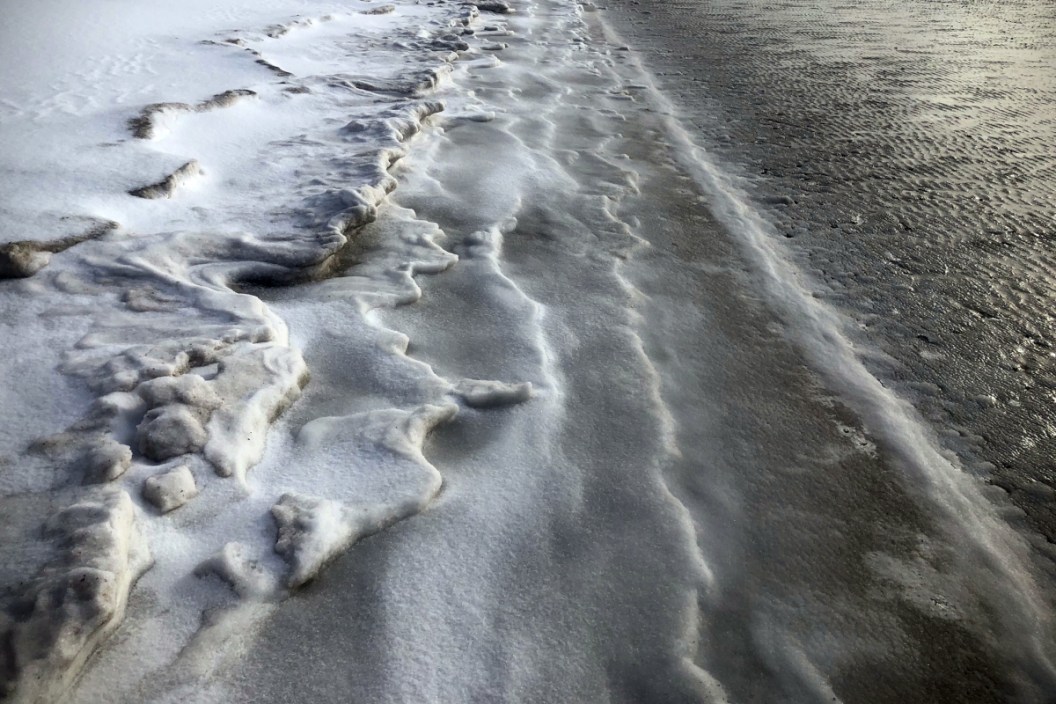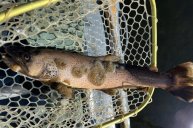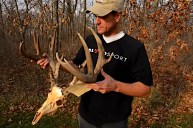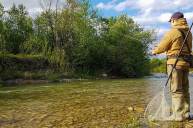Texas experienced extreme fish kills due to the winter freeze.
The recent unusual winter freeze that left millions of people freezing and without power in Texas also wreaked havoc on local wildlife populations. Now, the Texas Parks and Wildlife Department says the fish kill count has reached into the millions and the number may go up.
Especially hard hit were fish populations which are not accustomed to the cold conditions. The Lone Star State saw massive fish kills in both fresh and saltwater fisheries, resulting in thousands of dead fish washing ashore.
In places like Galveston, locals and authorities worked together to remove thousands of pounds of dead fish before they could begin to rot and smell.
"Freezing events along the Texas coasts are rare, but extreme cold temperatures can be a natural cause of fish kills. If fish do not make it to refuge in deeper, more temperature stable water in cold weather, they may die when water temperatures reach a certain threshold," - Texas Parks and Wildlife Department.
According to the TPWD, affected species of fish include black and red drum, tarpon, snook, sheepshead, snook, sea trout, grey snapper, pinfish, mullet, gulf menhaden, and more. In a later update, the staggering number of fish kills was made more apparent.
"An estimated minimum of 3.8 million fish were killed on the Texas coast during the Feb. 2021 freeze event. This fish kill consisted of at least 61 species. Non-recreational species contributed to 91% of the total mortality in numbers of fish," - Texas Parks and Wildlife Department.
San Antonio Bay, Aransas Bay, Matagorda Bay, Corpus Christi, Upper and Lower Laguna Madre and Sabine Lake also saw reports of fish kills. On social media, people posted photos and video of massive fish kills on inland freshwater lakes.
"Both the Upper and Lower Laguna Madre bay systems were hit particularly hard by this event. The Lower Laguna Madre had the highest mortality of Spotted Seatrout with an estimated 104,000 fish killed. That comprised 65% of the total estimated Spotted Seatrout killed and when combined with the Upper Laguna Madre, it comprised 89% of the total estimated Spotted Seatrout mortality along the Texas coast. Similarly, the Upper Laguna Madre had experienced Black Drum mortality at an estimated 82,600 fish and comprised 78% of the coastwide Black Drum killed," - Texas Parks and Wildlife Department.
While these numbers are staggering to hear, the TPWD is putting things into a historical perspective. The good news is, this isn't the worst fish die-off ever seen in the Lone Star State. Deep freeze events in the 1980s killed more. Between December of 1983 and December of 1989, an estimated 32 million fish were killed in three separate freeze events. The worst was the December 1983 freeze, which affected the whole coast and killed an estimated 14.4 million fish.
The TPWD noted in a press release they are still assessing the situation and the number of fish killed. Officials say the fisheries should bounce back from this freeze, as it did in the 80s, but anglers may need to do their part to help the process.
"The most obvious, and immediate one for speckled trout is conservation, a practice where every Texas coastal angler can make a contribution right now," TPWD Executive Director Carter Smith said. "Practicing catch and release and/or keeping fewer fish to take home in areas like Laguna Madre will only give us that many more fish to rebuild from as augment populations through our hatchery efforts, and we carefully evaluate what regulation changes may be needed to foster a quicker recovery for our bays."
Fish were not the only wildlife affected by the deep freeze. The Associated Press reports thousands of sea turtles were found either dead or were rescued from colder than normal waters in the Gulf. Many are now recovering in wildlife rehabilitation centers.
Birds, bats, and some free-ranging axis deer and blackbuck were also killed in the colder-than-normal temperatures. Fortunately, authorities do not anticipate a negative impact to native deer.
"TPWD does not foresee any significant losses of white-tailed or mule deer. Noticeable white-tailed deer mortalities, except for a few older deer, are not being reported. Some mortality of very old white-tailed deer, or those in poor body condition, is to be expected," TPWD said in a press release.
The TPWD is asking citizens to report animals likely killed by the extreme weather so the agency can better assess the overall impact to Texas' wildlife.
For more outdoor content from Travis Smola, be sure to follow him on Twitter and check out his Geocaching and Outdoors with Travis YouTube channels.
NEXT: PETA IS NOW GOING AFTER FISHERMEN
WATCH





